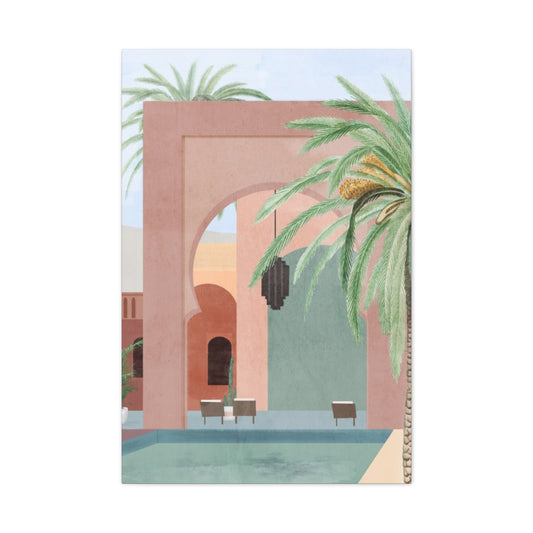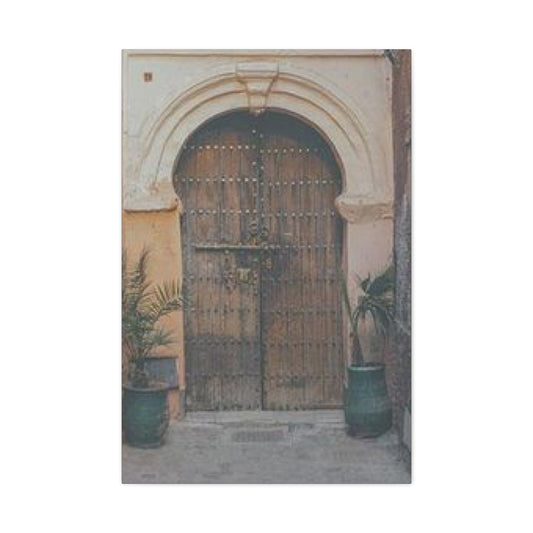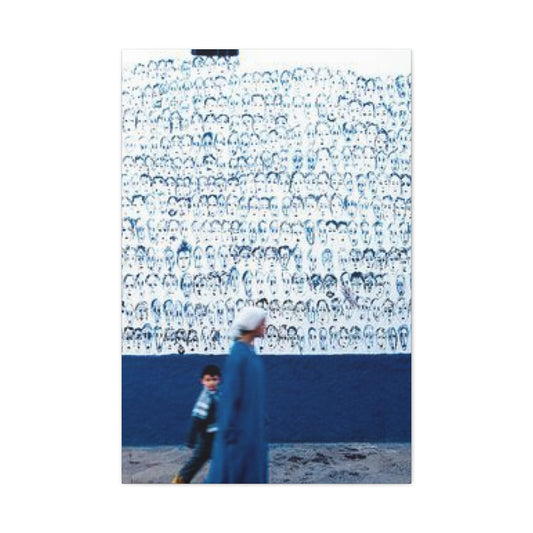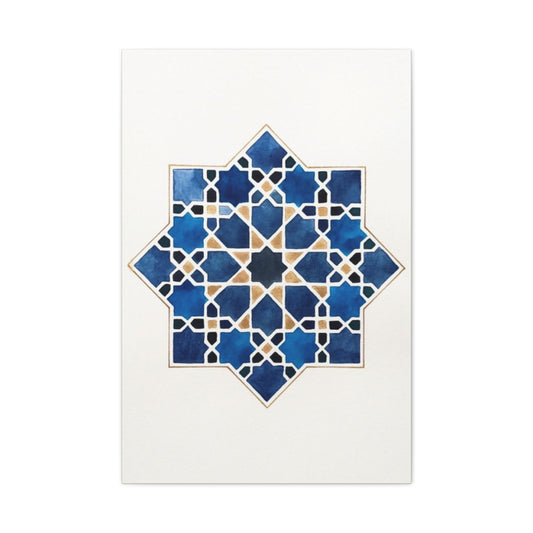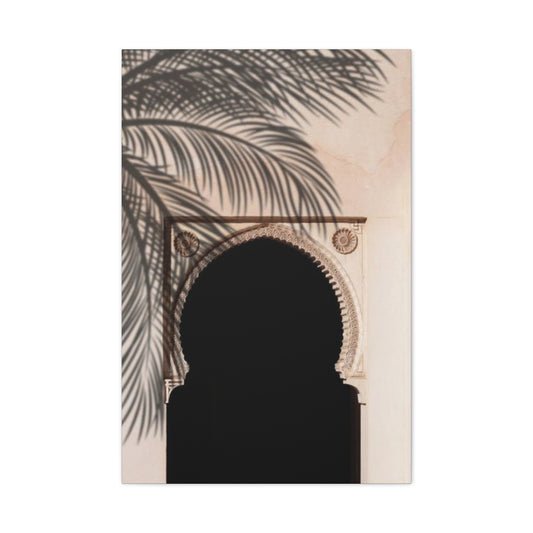Attic bedrooms represent an extraordinary opportunity to maximize residential space while creating intimate, personalized retreats that captivate the imagination. These elevated sanctuaries offer homeowners unique architectural possibilities that conventional ground-level rooms simply cannot provide. The slanted ceilings, exposed beams, and cozy dimensions create an atmosphere of enchantment and tranquility that transforms ordinary living spaces into extraordinary havens of comfort and style.
Modern homeowners increasingly recognize attic spaces as untapped potential rather than mere storage areas. These forgotten chambers beneath the roofline possess inherent charm and character that, when properly designed, can become the most cherished rooms in the entire residence. The intimate scale and architectural quirks of attic spaces lend themselves beautifully to bedroom applications, offering privacy, serenity, and a sense of escape from the bustling activities of daily life below.
The transformation of attic spaces into functional bedrooms requires thoughtful planning, creative vision, and strategic design implementation. Unlike conventional rooms with standard ceiling heights and rectangular footprints, attic bedrooms demand innovative approaches that embrace their unique architectural constraints while maximizing their inherent advantages. The sloped ceilings that might initially seem challenging actually create opportunities for dramatic visual interest and cozy alcoves that enhance the overall ambiance.
Contemporary interior design trends increasingly favor personalized spaces that reflect individual tastes and lifestyles. Attic bedrooms perfectly align with this philosophy, offering homeowners the opportunity to create truly distinctive environments that serve as personal retreats. Whether designed as primary sleeping quarters, guest accommodations, or multifunctional spaces that combine sleeping and working areas, attic bedrooms can be tailored to meet diverse needs while maintaining their unique charm and character.
The psychological benefits of elevated sleeping spaces should not be underestimated. The separation from ground-level activities creates a natural sense of retreat and privacy that enhances relaxation and sleep quality. The unique vantage point offered by attic windows provides different perspectives of the surrounding landscape, creating visual interest and connection to the natural environment that ground-level rooms may lack.
Enchanting Rustic Timber Attic Sanctuary
The rustic timber attic bedroom concept embraces the natural architectural elements inherent in most attic spaces, transforming structural necessities into decorative focal points. This design philosophy celebrates the beauty of exposed wooden beams, creating an atmosphere reminiscent of mountain lodges or countryside cottages that evoke feelings of warmth, comfort, and connection to nature.
The foundation of this design approach lies in highlighting the existing structural elements rather than concealing them behind conventional ceiling treatments. Exposed wooden beams become the starring architectural features, their natural grain patterns and weathered textures adding authentic character to the space. These structural elements create natural room divisions and focal points that guide furniture placement and define functional areas within the attic bedroom.
Wooden flooring selection plays a crucial role in establishing the rustic aesthetic throughout the space. Wide-plank hardwood floors in natural or lightly distressed finishes complement the exposed beam ceiling while creating visual continuity between horizontal and vertical surfaces. The warmth and texture of natural wood underfoot enhance the cozy atmosphere while providing practical durability for daily use.
Furniture selection for rustic timber attic bedrooms should emphasize simplicity and functionality while maintaining harmony with the natural wood elements. A carefully chosen wooden bed frame becomes the centerpiece of the room, its design echoing the rustic aesthetic established by the architectural elements. Platform beds or simple frame designs work particularly well in attic spaces, as they maintain clean lines while providing essential sleeping comfort.
Storage considerations become paramount in attic bedrooms due to space constraints and sloped ceilings that limit traditional furniture placement. Beds with integrated storage compartments offer practical solutions while maintaining the rustic aesthetic through natural wood construction and simple hardware choices. Built-in storage solutions that follow the roofline create custom functionality while maximizing available space.
Natural lighting enhancement through skylights transforms rustic attic bedrooms into bright, welcoming spaces that maintain connection to the outdoors. Strategically placed skylights provide both illumination and ventilation while creating dynamic lighting patterns that change throughout the day. The interplay between natural light and wooden surfaces creates warm, inviting atmospheres that enhance the rustic charm.
Window treatments in rustic attic bedrooms should complement rather than compete with the natural wood elements. Simple linen curtains or wooden blinds provide privacy and light control while maintaining the understated elegance of the rustic aesthetic. Natural fiber materials and earth-tone colors harmonize with wooden surfaces while adding textural interest to the overall design scheme.
Artificial lighting design should incorporate fixtures that enhance the rustic atmosphere while providing functional illumination for various activities. Wrought iron chandeliers, wooden pendant lights, or vintage-style wall sconces create ambient lighting that complements the natural materials. Table lamps with natural fiber shades provide task lighting for reading or other bedside activities.
Color palettes for rustic timber attic bedrooms should emphasize natural tones that complement rather than compete with the wooden elements. Warm whites, cream tones, and soft earth colors create serene backgrounds that allow the natural wood grain to take center stage. Accent colors drawn from nature, such as forest greens or warm terracotta, can be introduced through textiles and accessories.
Textile selection should emphasize natural fibers and traditional patterns that enhance the rustic aesthetic. Wool blankets, linen bedding, and cotton throws add comfort and visual interest while maintaining harmony with the natural materials. Traditional patterns such as plaids, stripes, or simple geometrics complement the rustic theme without overwhelming the space.
Decorative elements should be carefully curated to enhance rather than clutter the rustic attic bedroom. Vintage books, natural fiber baskets, ceramic pottery, and wooden accessories contribute to the overall aesthetic while providing functional storage and display opportunities. Plants in simple containers add life and color while reinforcing the connection to natural elements.
Serene Minimalist White Attic Retreat
The minimalist white attic bedroom concept transforms potentially challenging architectural constraints into opportunities for creating serene, spacious-feeling retreats. This design philosophy embraces simplicity and clean lines while using color psychology to visually expand limited square footage and create calming environments that promote rest and relaxation.
White color schemes in attic bedrooms serve multiple functional purposes beyond aesthetic appeal. Light colors reflect available illumination more effectively than dark alternatives, maximizing both natural and artificial light sources to create brighter, more welcoming spaces. In attic areas where ceiling heights may be limited, white surfaces create the visual illusion of increased vertical space while maintaining an airy, uncluttered atmosphere.
The selection of appropriate white tones becomes crucial in creating successful minimalist attic bedrooms. Pure bright whites work exceptionally well in attics with abundant natural light, creating crisp, clean environments that feel fresh and contemporary. In spaces with limited natural illumination, warmer white tones such as ivory, cream, or soft pearl create inviting atmospheres without the starkness that pure white might produce in dimly lit conditions.
Furniture selection for minimalist white attic bedrooms should emphasize clean lines, simple forms, and multifunctional capabilities. Platform beds with built-in storage maximize functionality while maintaining the uncluttered aesthetic essential to minimalist design. White lacquer or painted wood finishes on furniture pieces create visual continuity throughout the space while reflecting light to enhance brightness.
Storage solutions in minimalist attic bedrooms must balance functionality with aesthetic simplicity. Built-in wardrobes that follow the roofline provide maximum storage capacity while maintaining clean visual lines. Open shelving systems in white or light wood finishes offer display opportunities for carefully curated accessories while avoiding the visual weight of closed storage systems.
Lighting design in minimalist white attic bedrooms should emphasize clean, contemporary fixtures that complement the simplified aesthetic. Recessed ceiling lights provide ambient illumination without visual clutter, while sleek pendant lights or modern table lamps offer task lighting. The goal is to achieve adequate illumination through fixtures that maintain the minimalist philosophy.
Textile choices should emphasize quality over quantity, focusing on natural materials and simple designs that enhance comfort without compromising the minimalist aesthetic. White or neutral-toned bedding in natural fibers such as cotton, linen, or bamboo creates inviting sleeping surfaces while maintaining visual simplicity. Textural variety through different weaves and fabric weights adds interest without introducing color complications.
Window treatments in minimalist white attic bedrooms should provide privacy and light control while maintaining clean, simple lines. White or sheer curtains, minimalist blinds, or simple roller shades offer functional solutions without visual complexity. The goal is to control light and privacy while preserving the uncluttered aesthetic that defines minimalist design.
Flooring considerations should emphasize light colors and simple materials that complement the overall minimalist approach. Light hardwood floors, white-painted floorboards, or light-colored carpeting create seamless transitions between surfaces while maintaining the bright, airy atmosphere. Area rugs in natural fibers and neutral tones can define spaces and add comfort underfoot.
Accent elements in minimalist white attic bedrooms should be carefully selected and sparingly used to maintain the simplified aesthetic. A single piece of artwork, a few carefully chosen plants, or one statement light fixture can provide visual interest without cluttering the space. The principle of "less is more" guides all decorative decisions.
Temperature control and air circulation become important considerations in minimalist white attic bedrooms, as these spaces can become warm during summer months. Ceiling fans with clean, contemporary designs provide both air movement and additional lighting while maintaining the minimalist aesthetic. Proper insulation and ventilation ensure year-round comfort.
Contemporary Glass-Enclosed Attic Suite
The contemporary glass-enclosed attic bedroom represents the pinnacle of modern architectural innovation, transforming traditional attic spaces into sophisticated, light-filled sanctuaries that blur the boundaries between interior and exterior environments. This avant-garde approach to attic design creates dramatic visual impact while maximizing natural light and views, resulting in bedrooms that feel more like luxury penthouse suites than traditional attic conversions.
Structural glass walls serve as the defining feature of this design concept, creating transparent boundaries that maintain visual connection to surrounding spaces while providing necessary separation for privacy and function. The transparency of glass walls prevents the enclosed attic bedroom from feeling claustrophobic or disconnected from the rest of the living space, instead creating a floating sanctuary that appears to hover above the main living areas.
The engineering requirements for glass-enclosed attic bedrooms demand careful consideration of structural support, thermal performance, and safety factors. Laminated safety glass provides both durability and security while maintaining crystal-clear transparency. Structural glazing systems that minimize visible frame elements create seamless glass surfaces that maximize visual impact and light transmission.
Privacy considerations become paramount in glass-enclosed attic bedrooms, requiring innovative solutions that maintain transparency while providing necessary seclusion. Electrochromic glass technology allows instant opacity control at the touch of a button, transforming transparent walls into private surfaces when needed. Traditional options include motorized curtains or blinds integrated into the glazing system for seamless operation.
Interior design within glass-enclosed attic bedrooms must acknowledge the high visibility of the space from surrounding areas. Every design decision becomes magnified due to the transparent nature of the enclosure, requiring meticulous attention to organization, cleanliness, and aesthetic coherence. Furniture selection should emphasize quality pieces with clean lines and attractive forms that contribute to the overall visual appeal.
Climate control in glass-enclosed attic bedrooms requires sophisticated HVAC systems that can manage the thermal challenges created by extensive glazing. High-performance insulating glass units minimize heat gain and loss while maintaining transparency. Automated shading systems provide solar control during peak sun exposure periods while preserving views and natural light.
Lighting design must work harmoniously with the abundant natural light provided by the glass enclosure while offering adequate artificial illumination for evening use. LED strip lighting integrated into architectural elements provides ambient illumination without competing with natural light sources. Adjustable spotlights or track lighting systems offer task lighting for specific activities.
Furniture arrangement in glass-enclosed attic bedrooms should create functional zones while maintaining visual flow throughout the transparent space. Low-profile furniture pieces prevent visual obstruction while providing necessary functionality. Platform beds or floating designs maintain the contemporary aesthetic while preserving sight lines through the glass walls.
Flooring materials should complement the high-tech aesthetic while providing comfort and warmth underfoot. Polished concrete, large-format tiles, or sleek hardwood floors create sophisticated surfaces that reflect light and maintain visual continuity. Radiant floor heating systems provide comfortable temperatures while eliminating the need for visible heating elements.
Color palettes in glass-enclosed attic bedrooms should emphasize neutral tones and metallic accents that complement the high-tech glazing systems. Whites, grays, and black create sophisticated backdrops that allow the transparency and views to take center stage. Metallic finishes on fixtures and hardware echo the technical sophistication of the glazing systems.
Storage solutions must be carefully integrated to maintain the clean, uncluttered appearance essential to the contemporary aesthetic. Built-in wardrobes with flush doors and concealed hardware preserve clean lines while providing necessary storage. Open storage systems should be meticulously organized to contribute to rather than detract from the overall visual impact.
Industrial Chic Attic Loft Conversion
The industrial chic attic bedroom concept draws inspiration from converted warehouses and factory lofts, celebrating raw materials and utilitarian aesthetics to create sophisticated urban retreats. This design philosophy transforms attic spaces into contemporary sanctuaries that embrace the beauty of exposed structural elements, weathered surfaces, and functional fixtures while maintaining comfort and livability.
Exposed ceiling treatments form the foundation of industrial attic bedroom design, showcasing structural elements that are typically concealed in conventional rooms. Steel beams, ductwork, and mechanical systems become decorative features that add authenticity and visual interest. The juxtaposition of rough, industrial elements with soft furnishings creates dynamic tension that defines the industrial aesthetic.
Material selection emphasizes authenticity and durability, favoring genuine industrial components over decorative imitations. Reclaimed steel beams, weathered wood planks, and aged metal fixtures contribute to the authentic industrial atmosphere while providing functional benefits. The patina and wear patterns of genuine industrial materials add character that cannot be replicated through artificial aging techniques.
Concrete flooring represents the quintessential industrial surface, providing durability, low maintenance, and authentic factory-floor aesthetics. Polished concrete floors reflect light while maintaining the raw, utilitarian appearance that defines industrial design. Area rugs in neutral tones or geometric patterns can soften the hard surfaces while preserving the industrial character.
Color schemes in industrial attic bedrooms typically emphasize neutral tones with metallic accents that reflect the urban, utilitarian origins of the style. Grays, blacks, and whites form the foundation palette, while rust, copper, and brass accents add warmth and visual interest. These color choices complement the raw materials and fixtures that characterize industrial design.
Lighting fixtures should emphasize function over decoration, drawing inspiration from factory and warehouse illumination systems. Track lighting, exposed bulb fixtures, and metal pendant lights provide both ambient and task lighting while reinforcing the industrial theme. Edison bulbs and vintage-style fixtures add historical authenticity to the design scheme.
Furniture selection should balance industrial aesthetics with comfort requirements, incorporating pieces that reflect the utilitarian philosophy while providing necessary functionality. Metal bed frames, industrial shelving units, and repurposed factory furniture contribute to the authentic atmosphere while serving practical needs. Leather and canvas textiles add warmth and comfort while maintaining the industrial aesthetic.
Brick accent walls serve as powerful design elements that instantly establish industrial credibility while adding textural interest and warmth to the space. Exposed brick surfaces, whether original to the structure or added as cladding, provide natural variation in color and texture that complements the industrial material palette. These walls also offer excellent acoustic properties that enhance comfort in attic bedrooms.
Storage solutions in industrial attic bedrooms should emphasize function and accessibility while maintaining the utilitarian aesthetic. Open shelving systems constructed from metal pipes and reclaimed wood provide visible storage that becomes part of the decorative scheme. Rolling carts and vintage trunks offer mobile storage solutions that enhance the industrial atmosphere.
Ventilation considerations become important in industrial attic bedrooms, particularly those with exposed ductwork and metal surfaces that can affect temperature control. Ceiling fans with metal blades and industrial-style housings provide air circulation while reinforcing the design theme. Proper insulation behind exposed surfaces ensures comfort while preserving the authentic appearance.
Window treatments should maintain the industrial aesthetic while providing necessary privacy and light control. Metal blinds, canvas shades, or simple panels in neutral colors offer functional solutions without compromising the utilitarian philosophy. Large, uncovered windows can showcase industrial views while maximizing natural light infiltration.
Decorative elements should be carefully selected to enhance rather than soften the industrial aesthetic. Vintage factory equipment, industrial artwork, and metal sculptures contribute to the authentic atmosphere while personalizing the space. Plants in metal containers or concrete planters add life and softness while maintaining the industrial material palette.
Architectural Element Integration Design
The architectural element integration approach to attic bedroom design celebrates and incorporates existing structural features as primary design elements rather than concealing them behind conventional finishes. This philosophy recognizes that attic spaces possess unique architectural characteristics that, when properly highlighted and integrated, create distinctive and memorable bedroom environments that cannot be replicated in conventional rooms.
Ceiling structure exposure becomes a central design strategy, transforming necessary structural elements into dramatic architectural features. Exposed rafters, collar ties, and ridge beams create natural room divisions and visual rhythm while adding authentic character to the space. The geometric patterns created by structural framing provide ready-made decorative elements that require no additional investment while contributing significant visual impact.
Staircase integration transforms functional circulation elements into decorative features that enhance the overall design scheme. Existing staircases can be refinished and highlighted as sculptural elements, while new staircases can be designed to complement the architectural character of the space. Open riser designs maintain visual connection between levels while providing opportunities for creative lighting integration.
Dormer window utilization maximizes both natural light and architectural character, creating cozy alcoves and reading nooks that take advantage of the unique geometry of attic spaces. These architectural projections provide natural furniture placement opportunities while adding visual interest to both interior and exterior elevations. Window seats in dormer alcoves create intimate spaces within the larger bedroom environment.
Roofline following furniture and built-in elements create custom solutions that maximize space utilization while celebrating the unique geometry of attic spaces. Storage systems that follow the slope of the roof provide maximum capacity while creating interesting visual compositions. Custom wardrobes, bookcases, and seating elements that echo the roofline create cohesive design schemes that feel integral to the architecture.
Material selection should complement and highlight existing architectural elements rather than competing with them. When structural elements are wood, furniture and finishes should harmonize with the existing wood species and finish. When structural elements are metal or masonry, material selections should acknowledge and complement these characteristics while creating cohesive design schemes.
Lighting integration should work with architectural elements to create dramatic effects and enhance the unique characteristics of the space. Uplighting along rafters can emphasize structural geometry, while recessed fixtures between beams provide functional illumination without competing with architectural features. Strip lighting behind structural elements can create floating effects that emphasize the unique geometry of the space.
Color strategies should enhance rather than mask architectural elements, using paint and finishes to highlight structural features while creating cohesive color schemes. Contrasting colors can emphasize structural elements, while monochromatic schemes can create subtle integration. The goal is to create harmony between existing architecture and new design elements.
Furniture scale and proportion must acknowledge the unique dimensions and angles created by attic architecture. Low-profile furniture works well under sloped ceilings, while taller pieces can be positioned in areas with adequate headroom. Custom furniture solutions may be necessary to achieve optimal fit and function while maintaining design continuity.
Storage integration should take advantage of unique architectural opportunities created by attic geometry. Under-eave storage, built-in wardrobes that follow rooflines, and custom solutions that work with rather than against architectural constraints create maximum utility while maintaining design coherence. These custom solutions often become signature elements that define the character of the space.
Ventilation and climate control must work with architectural elements rather than compromising their visual impact. HVAC systems should be carefully integrated to maintain architectural integrity while providing necessary comfort. This may require creative solutions such as floor-mounted systems or equipment locations that preserve the visual impact of architectural elements.
Literary Haven Attic Bedroom Sanctuary
The library-integrated attic bedroom concept creates sophisticated sanctuaries that combine sleeping quarters with dedicated reading and book storage areas, resulting in multifunctional spaces that serve both rest and intellectual pursuits. This design approach recognizes that many individuals desire private retreat spaces that accommodate both physical comfort and mental stimulation, creating environments that support multiple aspects of personal well-being.
Book storage integration becomes a primary design consideration, requiring creative solutions that maximize storage capacity while maintaining bedroom functionality and aesthetic appeal. Floor-to-ceiling shelving systems that follow rooflines provide extensive storage while creating dramatic architectural features. The visual impact of well-organized book collections adds color, texture, and intellectual sophistication to bedroom environments.
Reading area designation within the bedroom creates dedicated spaces for literary pursuits that complement rather than compete with sleeping areas. Comfortable seating arrangements positioned near natural light sources provide optimal reading conditions while maintaining visual and functional separation from sleeping zones. These reading alcoves can be created through furniture arrangement or architectural modifications that define distinct functional areas.
Seating selection for library-integrated bedrooms should prioritize comfort for extended reading sessions while maintaining appropriate scale for attic spaces. Comfortable armchairs, chaise lounges, or built-in window seats provide dedicated reading furniture that enhances the library atmosphere. Adequate side table surfaces for books, beverages, and reading accessories complete the functional reading environment.
Lighting design becomes crucial in library-integrated bedrooms, requiring multiple illumination strategies that serve both ambient and task lighting needs. Natural light from skylights or dormer windows provides ideal reading conditions during daylight hours, while carefully positioned task lighting ensures comfortable reading during evening hours. Adjustable floor lamps, table lamps, and reading lights provide focused illumination for various seating positions.
Organization systems for book collections should balance accessibility with aesthetic appeal, creating displays that serve both functional and decorative purposes. Alphabetical, genre-based, or color-coordinated organization systems create visual order while maintaining easy access to desired volumes. A combination of organizational strategies can create visual interest while serving practical needs.
Climate control considerations become important in library-integrated bedrooms to protect book collections from humidity, temperature fluctuations, and other environmental factors that can damage paper and bindings. Proper ventilation, humidity control, and temperature regulation ensure the longevity of book collections while maintaining comfortable sleeping and reading conditions.
Flooring materials should balance comfort for extended standing and walking with acoustic considerations that support quiet reading activities. Carpeted areas provide comfort and sound absorption, while hardwood floors offer durability and easy maintenance. Area rugs can define reading areas while providing acoustic benefits and visual warmth.
Furniture multifunctionality becomes essential in library-integrated bedrooms where space efficiency is paramount. Storage ottomans provide seating and book storage, while nightstands with bookshelf components serve dual purposes. Built-in solutions that combine multiple functions maximize utility while maintaining clean, uncluttered appearances.
Color schemes should create calm, intellectually stimulating environments that support both rest and reading activities. Neutral backgrounds allow book collections to provide color and visual interest, while accent colors can be drawn from favorite book covers or reading accessories. Warm, scholarly colors such as deep greens, rich blues, or warm browns create appropriate atmospheres for literary pursuits.
Technology integration should support modern reading habits while maintaining the traditional library aesthetic. Built-in charging stations for electronic reading devices, adequate electrical outlets for reading lights, and wireless internet connectivity support contemporary reading practices while preserving the classic library atmosphere.
Cosmopolitan Sophistication Attic Retreat
The cosmopolitan sophistication design concept transforms attic bedrooms into elegant urban retreats that embody contemporary luxury and refined aesthetics. This approach emphasizes clean lines, premium materials, and sophisticated color schemes to create bedrooms that rival high-end hotel suites or luxury apartment bedrooms, demonstrating that attic spaces can achieve the highest levels of design sophistication.
Material selection emphasizes premium finishes and luxurious textures that create refined environments suitable for sophisticated urban lifestyles. Natural stone surfaces, high-quality hardwoods, and premium textiles contribute to the luxurious atmosphere while providing durability and timeless appeal. The careful selection and coordination of premium materials creates cohesive design schemes that exude sophistication and quality.
Spatial flow design in cosmopolitan attic bedrooms emphasizes seamless transitions between functional areas while maintaining visual continuity throughout the space. Open floor plans that integrate sleeping, dressing, and relaxation areas create sophisticated living environments that maximize the perceived size of attic spaces while providing clearly defined functional zones.
Furniture selection should emphasize contemporary designs with clean lines and premium construction that reflect sophisticated urban aesthetics. Platform beds with upholstered headboards, sleek nightstands, and modern seating create sophisticated sleeping environments. Built-in furniture solutions can provide custom functionality while maintaining the clean, uncluttered appearance essential to cosmopolitan design.
Lighting design becomes a crucial element in creating sophisticated atmospheres that support various activities while providing visual interest and dramatic effects. Layered lighting schemes that combine ambient, task, and accent lighting create flexible illumination options suitable for different times of day and activities. Contemporary fixtures with clean lines and premium finishes complement the sophisticated aesthetic.
Color palette selection should emphasize sophisticated neutrals with carefully chosen accent colors that create elegant, timeless schemes. Monochromatic gray schemes, warm whites with metallic accents, or sophisticated beige tones create refined backgrounds that support the cosmopolitan aesthetic. Bold accent colors can be introduced through artwork, textiles, or accessories for visual interest.
Window treatments should provide privacy and light control while maintaining the clean, sophisticated appearance essential to cosmopolitan design. Motorized blinds, sleek curtain systems, or automated shades provide functional control while contributing to the high-tech, urban atmosphere. Quality fabrics and precise installation details ensure professional appearances that enhance the overall sophistication.
Storage solutions must be carefully integrated to maintain the uncluttered appearance essential to sophisticated design while providing necessary functionality for contemporary lifestyles. Walk-in closets, built-in wardrobes, and custom storage systems provide organization solutions that remain visually invisible while offering maximum utility and convenience.
Technology integration should support contemporary lifestyles while maintaining sophisticated aesthetics through concealed installation and premium components. Automated lighting control, climate control systems, and entertainment technology should be seamlessly integrated to provide convenience without compromising the refined appearance of the space.
Flooring selection should emphasize premium materials and expert installation that create sophisticated foundations for the overall design scheme. Large-format tiles, premium hardwoods, or luxury carpeting create refined surfaces that complement the cosmopolitan aesthetic while providing comfort and durability for daily use.
Artistic elements and accessories should be carefully curated to enhance the sophisticated atmosphere while reflecting personal tastes and cultural interests. Contemporary artwork, sculptural elements, and premium accessories add personality and visual interest while maintaining the refined aesthetic that defines cosmopolitan sophistication.
Wabi-Sabi Inspired Attic Tranquility
The wabi-sabi philosophical approach to attic bedroom design embraces imperfection, impermanence, and incompleteness as sources of beauty and authenticity, creating serene environments that celebrate natural materials, weathered surfaces, and the gentle passage of time. This Japanese-inspired aesthetic transforms attic spaces into contemplative retreats that prioritize authenticity and natural beauty over conventional perfection.
Material authenticity becomes the foundation of wabi-sabi design, emphasizing natural materials that show evidence of age, use, and weathering as desirable characteristics rather than flaws to be concealed. Reclaimed wood with visible grain patterns, nail holes, and weathering creates surfaces rich with history and character. These authentic materials contribute to environments that feel genuine and connected to natural processes.
Imperfection acceptance transforms traditional design thinking by celebrating irregularities, asymmetries, and worn surfaces as sources of visual interest and emotional connection. Hand-crafted furniture with visible tool marks, uneven surfaces, and natural variations creates unique pieces that embody the wabi-sabi philosophy while providing functional utility.
Color palette selection emphasizes earthy, natural tones that reflect the colors found in natural environments and weathered materials. Soft browns, muted grays, warm whites, and gentle beiges create harmonious color schemes that support contemplation and relaxation. These understated colors provide calming backgrounds that allow the natural beauty of materials and textures to take prominence.
Textile selection should emphasize natural fibers and simple constructions that show evidence of use and age gracefully over time. Linen bedding that becomes softer with washing, wool blankets with natural variations in texture, and cotton fabrics that develop character through use embody the wabi-sabi appreciation for materials that improve with age.
Furniture selection should prioritize pieces with visible construction methods, natural materials, and simple forms that emphasize function over decoration. Low platform beds constructed from reclaimed wood, simple wooden stools, and handcrafted storage pieces create environments that feel authentic and connected to traditional craftsmanship methods.
Lighting design should emphasize soft, warm illumination that creates intimate atmospheres conducive to contemplation and rest. Natural lighting through simple window treatments, warm-toned LED fixtures, and candles create gentle illumination that enhances the serene atmosphere while supporting various activities throughout the day and evening.
Organization philosophy in wabi-sabi bedrooms embraces visible storage and display of everyday objects as part of the aesthetic experience. Open shelving that displays books, clothing, and personal objects creates lived-in environments that celebrate daily life rather than concealing it behind closed doors. This approach creates more authentic, comfortable living environments.
Natural element integration brings living plants, stones, wood specimens, and other natural objects into the bedroom environment as decorative elements that reinforce the connection to natural processes and seasonal changes. These elements add life and dynamic change to the static built environment while supporting the wabi-sabi appreciation for natural beauty.
Maintenance philosophy acknowledges that wabi-sabi environments require different approaches to care and upkeep that allow natural aging processes to enhance rather than diminish the beauty of materials and surfaces. Regular cleaning and care preserve functionality while allowing natural patina, wear patterns, and aging to contribute to the evolving beauty of the space.
Space arrangement should emphasize simplicity and functionality while creating environments that support contemplation and rest. Minimal furniture arrangements that allow natural light and air circulation to flow freely through the space create tranquil environments that support the meditative aspects of wabi-sabi philosophy.
Seasonal adaptation recognizes that wabi-sabi environments should change and evolve with natural cycles, incorporating seasonal textiles, natural decorations, and adaptive arrangements that reflect the changing seasons and the passage of time. This approach creates dynamic living environments that remain connected to natural rhythms and cycles.
Conclusion
The successful transformation of attic spaces into functional, beautiful bedrooms requires comprehensive planning that addresses structural, mechanical, and aesthetic considerations while maximizing the unique advantages these spaces offer. Strategic implementation ensures that the resulting bedrooms not only meet functional requirements but also capitalize on the distinctive character and charm that make attic bedrooms special and memorable.
Structural assessment forms the foundation of successful attic bedroom conversions, requiring professional evaluation of load-bearing capacity, floor systems, and structural modifications necessary to support bedroom functionality. Proper structural planning ensures safety while creating opportunities for architectural enhancements that can become defining features of the finished space.
Insulation and climate control strategies become crucial in attic bedrooms due to their exposure to exterior temperature variations and weather conditions. Proper insulation installation, ventilation systems, and HVAC integration ensure year-round comfort while managing energy efficiency and preventing moisture-related problems that can compromise both comfort and structural integrity.
Building code compliance ensures that attic bedroom conversions meet safety requirements for egress, ceiling heights, ventilation, and electrical systems. Professional design and construction management navigate regulatory requirements while maximizing design possibilities and ensuring that finished bedrooms provide safe, legal living environments.
Natural light optimization strategies maximize the inherent advantages of attic locations while addressing potential challenges related to limited window opportunities. Skylights, dormer windows, and strategic window placement create bright, welcoming environments that take advantage of elevated positions and unique view opportunities.
Storage maximization techniques address the spatial constraints typical of attic bedrooms while creating organized, functional environments that support contemporary lifestyles. Built-in storage systems, multifunctional furniture, and creative organization solutions ensure that attic bedrooms provide adequate storage despite spatial limitations.
Future adaptability planning ensures that attic bedroom designs can evolve with changing needs and preferences over time. Flexible layouts, adaptable storage systems, and infrastructure planning support future modifications while protecting the initial investment in attic bedroom conversion.
Professional collaboration with architects, contractors, and interior designers ensures that attic bedroom projects achieve their full potential while avoiding common pitfalls and costly mistakes. Expert guidance helps navigate technical challenges while maximizing design opportunities and ensuring successful project outcomes that provide long-term satisfaction and value.
Attic bedrooms represent extraordinary opportunities for creating unique, personalized living spaces that capitalize on architectural character while providing intimate retreats from daily life. Through thoughtful design implementation and strategic planning, these elevated sanctuaries can become the most cherished and distinctive rooms in any residence, offering comfort, beauty, and individual expression that reflects personal tastes and lifestyle preferences.











